We will make a brief review of the flora of Chulilla. Apart from the typical species of Mediterranean maquia that form the undergrowth, we can highlight the following among the woody species:
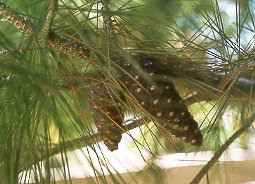
Carrasco Pine (Pinus halepensis)
Tree that reaches 22 m high, with a clear crown and little foliage, with the sometimes tortuous trunk and the gray-silver bark. It is the predominant tree in our town as a result of the constant use of other more profitable wood species and conservation laws dating from the mid-twentieth century.
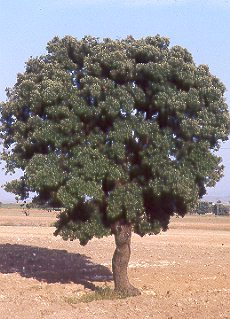
Carrasca (Quercus Ilex subesp. Rotundifolia)
Rounded canopy tree that reaches 10-15 m high, with the short trunk and the cracked bark of dark gray color. Evergreen Make dark green and underside light, tomentoso. It blooms in April-May. Acorn oblong-cylindrical, pointed, 2-3 cm in length. Species indifferent in terms of soil, although it likes the loose and deep. Very resistant to drought. It supports badly the transplant in the first phases of its life. Noble tree that gives a pleasant shade. Stoically supports pruning, since in the wild root regrowth after fires, felling, etc.
Isolated specimens are found throughout most of the municipal area being somewhat more numerous in the southeast area, bordering Gestalgar. The intensive carbonation of the post-war years ended almost all susceptible forest species for this practice. They are in the memory of the neighbors, vestiges of great carrascas that nowadays are no longer, but that still they are alive, that if, with smaller size, due to the successive fellings suffered.
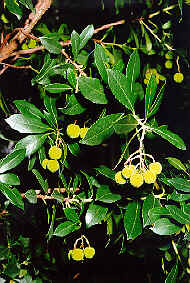
Madroño (Arbutus unedo)
The arbutus is a shrub, it can measure up to 8 to 10 m high, although it does not exceed 3-5 m. Trunk with reddish-red crust.The fruit is a globose berry of orange-red color that measures about 20 to 25 mm. They bloom in autumn at the beginning of winter, while the fruits of the previous year ripen.
It is very common in all the northern faces of mountains and ravines, it even becomes the predominant species on certain slopes of the Vallfiguera ravine and the Turia valley. Given its spectacular regrowth after a fire it is very visible after these.
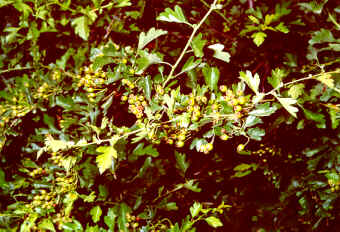
Majuelo (Crataegus monogyna)
Tree of 3 to 4 m that can reach up to 10 m.
Intense green leaves by the beam and paler on the underside. More or less lobed. Lose the leaf to spend the winter. Grayish brown trunk and grayish branches, with short and strong spines. Its fruits are the saddles (red balloons the size of a pea). It blooms from April to May, and the fruits ripen in September.
It can be found on the banks of the rivers, both Turia and Sote, but it is quite scarce.
It is also known as hawthorn.
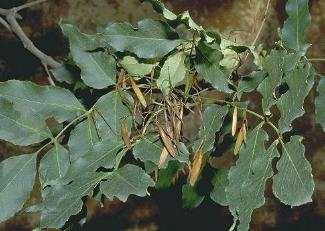
Fresno de flor o de montaña (Fraxinus Ornus)
It is found in the Mediterranean region, southern and central Europe to the north, from southern Czechoslovakia and northeastern Romania. In Spain, in the mountains of Levante, mountains of Burgos and in the interior of Catalonia.
Tree up to 20 m wide, well developed.
It is usually found in riverside forests, in ravines and torrents of wet and cool areas.
In Chulilla it is mostly in a small ravine just in front of the peñeta. It can be seen clearly in the first weeks of November when the tone of its leaves changes to a clearly autumnal reddish color. There are also isolated individuals in the vicinity of that ravine, from Vallfiguera to the Gollizno cave.
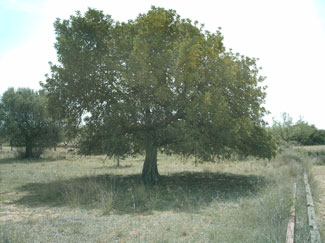
Carob (Ceratonia siliqua)
The carob tree reaches 15 m high; It is perennial foliage. It has dark green pinnate leaves and small, red flowers and attach them. The fruit (carob) is a dark brown leathery leathery pod, 10 to 30 cm in length, which contains a sweet and pleasant gummy pulp that surrounds the seeds. The pods are edible and are used as fodder. The seeds, of notoriously uniform size and weight, were the original carat pattern, the unit of weight used in jewelry. The carob tree is native to the Mediterranean region but is also grown in other warm areas.
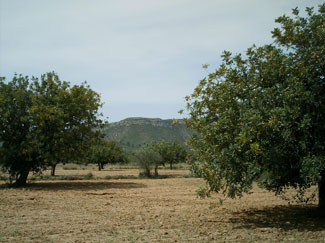
In Chulilla it is cultivated in virtually any area. Due to its low water need. It is common in the years when the price of the garrofas goes high to go out to the mountain to espigolar. That is to say, to fold the garrofas of fields that are not yours but that are lost. Although there are also frequent robberies and gypsy bands appear that steal fields of whole clubs. In 2005, prices reached 80 cents per kilo.
